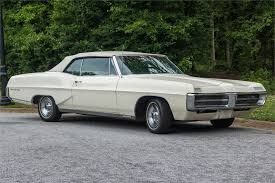You
can’t exactly call a car an inanimate object, since you can use it to drive to
San Francisco, or to the 7-Eleven, so clearly animated. Though it’s not alive, not in the fashion of
a German Shepard, goldfish or your Uncle Lou.
I grew up in a car family, imbedded
in a surrounding car culture, in the 1950s and 60s. My father worked hard at his job, maintained
our house, and worked on cars, to the exclusion of everything else. To us, cars were no less creatures who lived
with us than our various dogs and cats, and to a lesser degree, the
children. Our cars had names and the
tradition was honored by my friends as well, so I spent satisfying time in
Alice Blue, the Blue Max (no relation), Vinnie the Volkswagen, Dudley the
Dodge, The Silver Goose, the Silver Queen (also no relation), Mr. B (my car)
and Tootles, my mother’s name for her 1947 Plymouth which she drove fast enough
to frighten Mario Andretti.
We all fixed our own cars in those days. You only consulted a mechanic in the direst of straights. And they needed a lot of fixing. I had to change the spark plugs and distributor points on Mr. B on a regular basis, replace brake shoes and pads, and attend to the constant disintegration of exhaust systems, batteries, carburetors, starter motors, solenoids, and rocker panels, which I patched with sheet metal salvaged from an old refrigerator.
Safety was never a
consideration. Seat belts had yet to be
required, and occasionally slamming your head into the dashboard was considered
encouragement to improve your driving skills.
I don’t remember learning to drive,
since my brother and I had hurled whatever junkers were cast about the house
through the trails and fields of our neighborhood from the time we were tall
enough to look out the windshield.
What does all this have to do with writing, the mission of this blog? When I created Sam Acquillo, my first and most enduring protagonist, I gave him a 1967 Pontiac Grand Prix, an impossibly oversized and stupidly over-powered hunk of Detroit iron, because that was the type of car I was raised on. It was an obvious thing to do. I made his father a mechanic (like mine, though my dad was an Ivy League graduate and corporate executive, which did nothing to dilute his thuggish devotion to internal combustion, in his cars and himself.)
I’m sure you can be a male American
mystery writer and never include a dumb car in the narrative, but not if you’re
from my world. It’s as essential as a
divorced spouse or an everyday bartender.
Cars today are serenely smooth, quiet
and efficient. They are computers with
engines attached, and I don’t know the first thing about fixing them. The average minivan could probably smoke a
souped up ’67 Mustang off the line, but there’s something missing. I’ve had a string of Audis, and some have
sparkled with personality, including the two aging versions my wife and I still
cling to. The Subaru that’s now my
everyday ride is even more refined, and I love it, but it’s too good. There’s no rattle and roll, no coughing
start, no deafening wind noise, errant squeaks or intermittent, mysterious
surges of power. There’s a big digital
screen filled with functionality I’ve barely scratched, ways to drive without
holding the steering wheel, a four-cylinder turbo-charged engine (four-cylinder?!)
that leaps from green lights, and constant reminders to behave in a more responsible
and socially conscious manner.
In other words, entirely tamed. And taming.
We’re better off for it, but I’m grateful that I got to live in the Wild
West of unfettered, lethal and exhilarating car-crazy abandon, when I was too
young to know how lethal, and too lucky to suffer any permanent harm.

